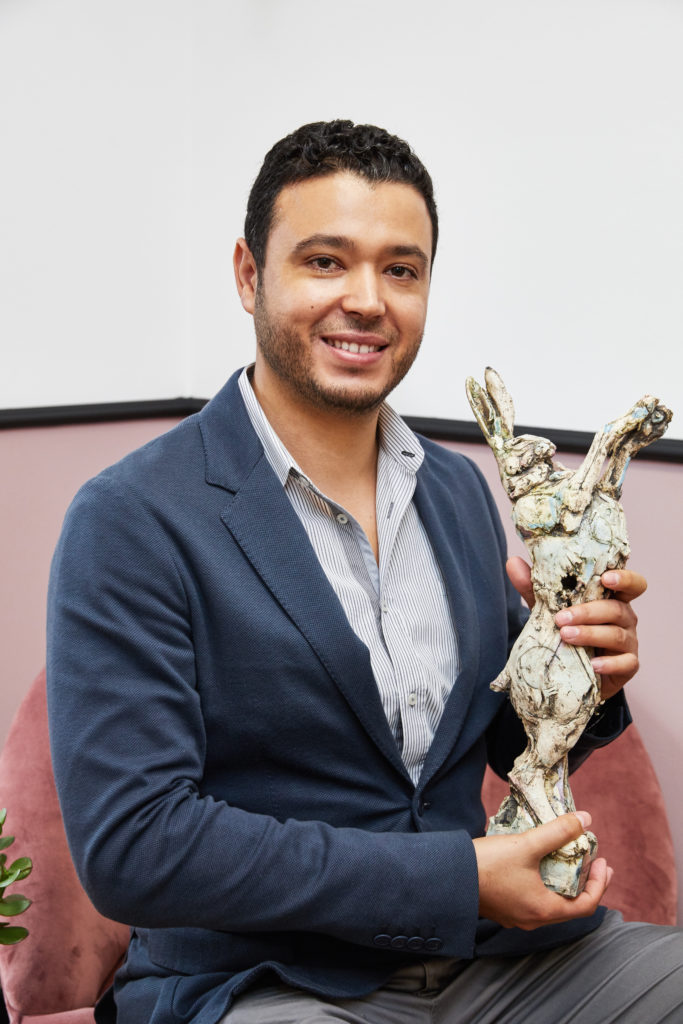Altertox went to meet 10 Young scientists to know more about their activities, vision of science and how they bring research and innovation using New Approach Methodologies (NAMs)!

Dr. Kamel Mansouri
- Dr. Kamel Mansouri - Computational Chemist at National Institute of Environmental Health Sciences
- Chemoinformatics - Data mining - QSAR/QSPR - Chemicals risk assessment - Molecular modeling - Drug design

How did your story with toxicology begin?

My project was part of a collaboration between seven European groups funded by the European Commission aimed towards the implementation of the REACH (Registration, Evaluation, Authorization and Restriction of Chemicals) EU regulation (www.eco-itn.eu/). In particular with respect to the replacement, refinement and reduction of animal tests by alternative (in-silico and in-vitro) methods. My role was to study Persistent Organic Pollutants (POPs), their physicochemical properties, pathways to the environment and their acute effects on humans and wildlife using a computational approach called Quantitative Structure-activity Relationships (QSARs). The resulting models were used to contribute to filling the lack of knowledge about chemicals for regulatory reasons of specific endpoints of interest to the European legislation REACH.

What is the current hot topic at work/in your lab?

NICEATM (the NTP Interagency Center for the Evaluation of Alternative Toxicological Methods) is leading ICCVAM’s (Interagency Coordinating Committee on the Validation of Alternative Methods) efforts to evaluate and validate new approach methods (NAMs) for the Acute 6-Pack Studies (Acute oral, dermal, & inhalation lethality, Eye & Skin Irritation, and Skin Sensitization).
After the success of previous international collaborative projects for building consensus models predicting chemicals potential endocrine disrupting activities that are being considered/used by regulators, we’re currently working on evaluation of similar use for the acute oral toxicity collaborative model (CATMoS) and applying the same computational crowdsourcing approach to model acute inhalation.

Nicole Kleinstreuer, National Institute of Environmental Health Sciences (NIEHS)
Antony Williams, U.S. Environmental Protection Agency (US EPA)
Richard Judson, U.S. Environmental Protection Agency (US EPA)
Roberto Todeschini, Università di Milano Bicocca, Italy.

What drives you/motivates you to work under the 3Rs topic?

Since my early university studies, I was fascinated by two scientific fields: chemistry and computer science, that I initially studied separately. Then, I discovered my passion for the field of cheminformatics, still recent at the time, combining both. Since then, I personally believed that computational approaches can someday be developed to simulate all chemical and biological experiments to the finest details, and replace any need to conduct experiments that might harm any living creature.

Are there things to change to ease the replacement of animal in science?

I believe that international collaboration and harmonization is the only way to move forward. The replacement of animals in science can only be successful if new methods are accepted and adopted by all countries. This can only be done collaboratively so that the international involvement in the scientific results can derive simultaneous regulatory acceptance.

What is next in science ?

We are still tackling one endpoint at a time and testing/simulating one chemical at a time, which is not the real-life scenario. We’ll need to move towards a real simulation of the natural complex whole-body exposure to chemicals (mixtures) interacting with all biological processes that occur in real time at the molecular and/or atomic level. We’re already making major steps towards this goal with technological advances in computing power and machine learning in addition to a better understanding of biological processes and genome sequencing.
This will lead to the building of virtual organs then ideally a whole virtual human body to replace the reliance on outdated and less relevant animal studies.

What are your future professional expectations?

My near-future goal is to promote the use of machine learning tools and artificial intelligence among scientists of different backgrounds. These are powerful tools but are currently mostly available to users with a certain level of programming and/or computational expertise. We’re aiming to take advantage of the recent developments in object-oriented programming and create user-friendly platforms that allow the development of advanced computational models in an intuitive, visually guided way and make it accessible to non-technical users of information systems. This will help create automated workflows and standardize best practices for data curation, analysis and predictive toxicology.

